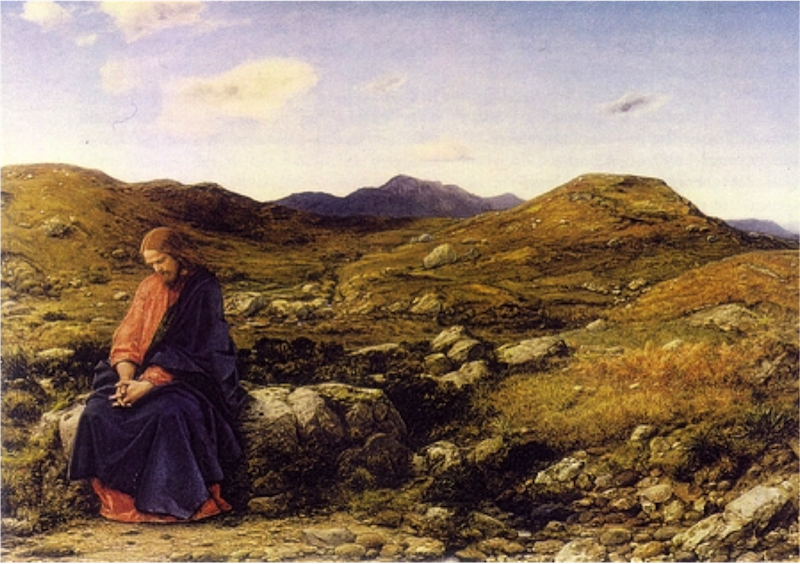Man of Sorrows
Lou Kaloger
The painting you are looking at was completed in 1860 by the 19th-century Scottish artist William Dyce. It is called "Man of Sorrows." I think it's an odd painting, though on the surface it does not seem that odd. Without the title we might think it is a painting of Jesus in the wilderness or perhaps in the Garden of Gethsemane. But the title tells us something different. The phrase “Man of Sorrows” comes from Isaiah 53:3 ("He was despised and rejected by men, a man of sorrows, and familiar with suffering. Like one from whom men hide their faces he was despised, and we esteemed him not.")
An internet search of this phrase shows us that “Man of Sorrows” paintings were commonplace during the Middle Ages. They were portraits of the scourged and wounded Jesus at the point of his humiliation, displaying the marks of crucifixion on his hands and side. Dyce's painting, however, looks nothing like this. Instead it depicts a unwounded Christ sitting on a rock. And yet, it is a portrait of a Christ who is clearly saddened. So how are we to interpret this painting?
It appears that part of the interpretation of this painting lies in our understanding that the landscape Dyce is depicting is not 1st-century Palestine. The landscape Dyce is depicting is the countryside of 19th-century Scotland. Christ arrives, but he is ignored. He is scourged, but not by whips and beatings. Instead, for Dyce he is scourged by indifference and apathy. He is the “unesteemed” Man of Sorrows. So I look at that painting and I’m ready to move on. But then I imagine for a moment: What if the landscape depicted by Dyce was not the countryside of 19th-century Scotland? What if it was someplace from the 21st century? What if it was my city? What if it was my neighborhood? What if it was my home?
